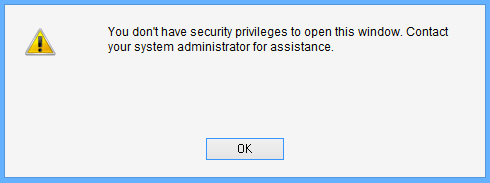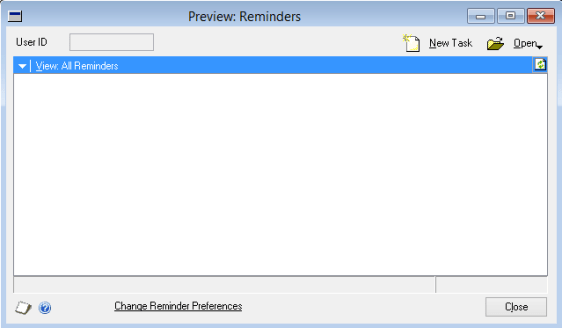I was reported with a very vague issue: user could not create a custom reminder from a smartlist. He received an error message as follows:
Basically, below is the window which user is trying to open:
Ideally, you would think that this window is a part of Microsoft Dynamics GP dictionary. But it is NOT. It is a part of Smartlist dictionary.
But trick here is, you cannot see this window listed on when you try to assign this window a particular Security Task using Security Task Setup window. Then, how? How would I give access to this window?
After around an hour or so, with several script logs and profilers misleading me, I found one interesting statement on SQL Profiler trace, that was executed when the user tried opening that window:
Exactly after this SQL statement, the above error message was thrown at the user. Which means, I must focus my troubleshooting efforts on this table; DYNAMICS..SY10000. This table is simply called User Security.
When user tried to open Custom Reminder window, system checked this table and see whether this user has got access to a window whose resource ID is 1452 in dictionary 0 (which is nothing but product Microsoft Dynamics GP) inside company ID 1 (which is my production GP company).
I was always thinking about something in Smartlist (which is, without any doubt), but system was checking something else in a different dictionary altogether. I wanted to see the window in Microsoft Dynamics GP dictionary which is of resource ID 1452. Opened the DYNAMICS.DIC on Dexterity and checked it, only to realise with disbelief that it was referring to following window:
I did not understand first. Why would it check something totally irrelevant from what user wanted to open? Why would it check access to this window, when opening a window in different dictionary? I have no answer to these questions.
But I just thought I would take a chance. I checked this user’s security task setup and found that Reminders window was not assigned. I assigned that window for this user as shown below:
Tested whether he could open Custom Reminder. To my utter disbelief, IT DID.
So, if somebody is facing same issue and has already lost almost all your hair, here you have, a solution that would bring upon peace.
VAIDY






